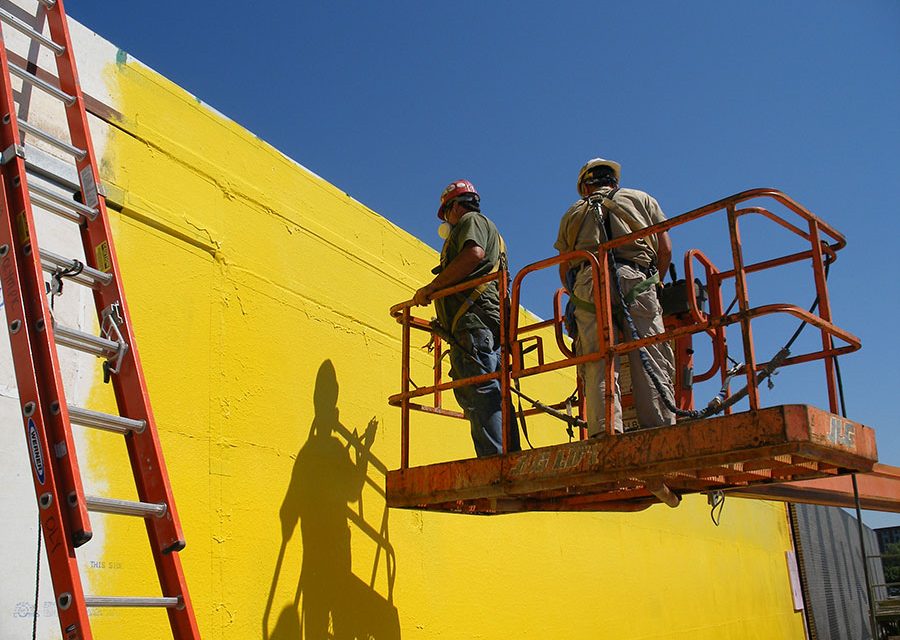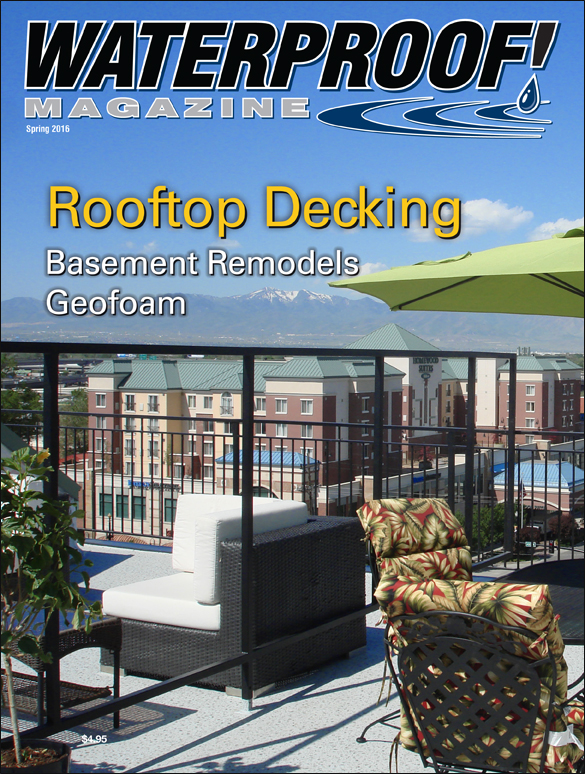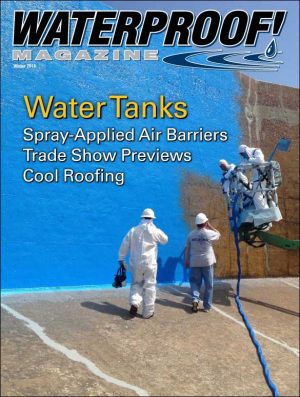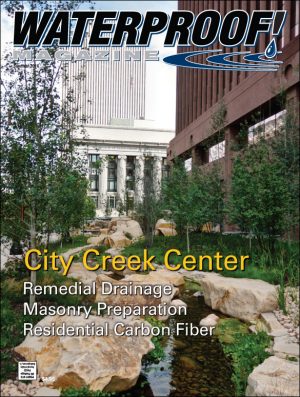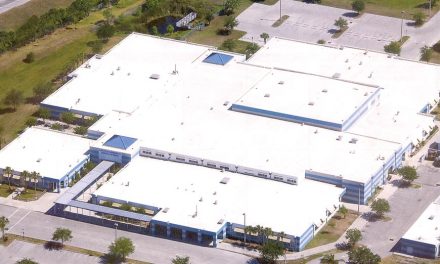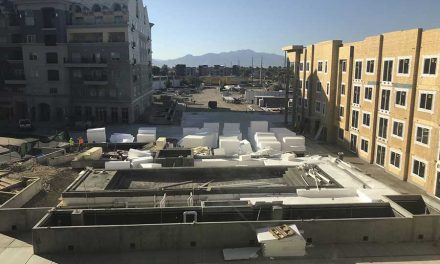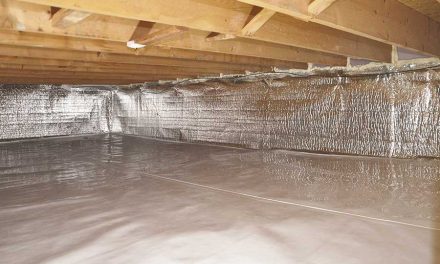Applied correctly, both thick- and thin-coat systems can be effective at enhancing energy efficiency.
Air barriers are a relatively new construction product. They began to appear in Canada as part of an energy-efficiency effort in the mid-1980s. They made their first appearance in U.S. codes about fifteen years later, and today, they are mandated in 12 states.
“Energy codes are being adopted quickly across the U.S.,” says John Chamberlain, a product manager at Sto. “A fully-functioning, continuous air barrier will do more to reduce energy use than many other practices, such as additional insulation.” More precisely, research shows that about 40% of energy loss is due to air movement, and that air barriers can play a larger role in energy efficiency than increasing insulation thickness. Over the life of the building, the energy savings far outweigh the cost of installing the barrier.
So it’s no surprise that the 2012 International Energy Conservation Code (IECC) requires air barriers. As this standard makes its way into iterations of the U.S. residential and commercial building codes, air barriers will become even more common. They have been a requirement of the National Building Code of Canada since 1995.
Air Barrier Materials
According to the Air Barrier Association of America (ABAA), the most popular types of air barriers are mechanically fastened building wraps (usually for residential work), self-adhered sheet goods and fluid-applied membranes. These last two types are more common for big commercial jobs. Some sheathing materials qualify as air barriers, but the joints must be carefully detailed if they are to perform as an air barrier.
“Housewraps and peel-and-sticks have been around a while,” says Chamberlain, but they are used as weather barriers or moisture barriers, not air. Additionally, laps and detailing can be problematic. It’s tough to make an air barrier out of a wrap.”
That’s why fluid applied air barriers are becoming one of the most popular barriers, even in light commercial and residential work, as they offer a number of significant advantages. For starters, there is a structural bond to the substrate. Second, they’re easier to apply, and provide coverage of caulked joints, terminations, differing substrates, and flashing. Windows and rough openings are easier. Brick ties and fasteners are easily dealt with. Chamberlain says, “The more complex the building, the more simple the choice becomes.”
Russ Snow, Building Science Specialist at W.R. Meadows, says, “Primarily, it’s their ease of application. It’s not a multi-step process, and it’s easier to get continuity.”
There are at least a dozen spray-applied air barrier systems on the market, falling into two broad classifications: thick-coat systems, which evolved from spray-applied waterproofing products; and thin-coat systems, originally developed for EIFS wall claddings. For the purposes of this article, coatings that cure to a minimum thickness of 40 mils are considered thick-coat systems.

Because of their porous nature, CMU (concrete block) walls were among the most difficult substrates to seal. Back-rolling the material is especially important with thin-coat systems.
Ryan Dalgleish, technical director at the ABAA, states that his organization does not classify air barriers based on millage, but only the stated performance characteristics of the membrane.
Brian Carey says that differences are significant enough that perhaps they should. He says, “Specifiers of roofing systems and traffic coatings would not consider classifying systems of significantly different thickness as equals, yet fluid-applied membrane air barriers, whose specified mil thickness varies between seven and 120 mils, are often placed in the same specification and classified as ‘equal’.” Carey published a report on performance differences between thick- and thin-coat air barrier systems in 2010. At the time, he was product manager for air and vapor barriers at Carlisle Coatings & Waterproofing.
Air vs. Vapor
One common source of confusion is the difference between vapor barriers and air barriers. Air barriers simply limit the movement of air. Vapor barriers limit the movement of moisture and have a permeance of less than 0.01 perms. So some fluid-applied air barriers have a low perm rating and also qualify as vapor barriers. Others have a relatively high permeance, with ratings of seven to 12 or more.

Determining whether you need a permeable or impermeable air barrier depends primarily on climate and wall design. Generally, air barriers with a high permeance rating are desired to avoid trapping moisture within wall assembly. However, fluid-applied systems sometimes perform numerous roles in a wall assembly. If the air barrier doubles as a vapor retarder or water resistive barrier, additional characteristics must be considered.
As noted above, because air barriers are specified as performance-based products, they’re specified by permeance and not by millage.

Fluid-applied air barriers work especially well on large projects with numerous details and penetrations.
Paul Grahovac, air barrier product manager at Prosoco, explains, “The first consideration must always be: does the product stop air leaks and let water vapor evaporate out of the wall? Thin vs. thick doesn’t matter if these checkpoints aren’t met.”
Carey says most fluid-applied membrane products are “thick-coat” products with a specified cured thickness of 40 mils. “This matches the thickness of self-adhering roofing underlayments and self-adhering air/vapor barrier membranes, both of which have a very good track record of providing effective waterproofing in their respective applications,” he says.
Does Millage Matter?
But do thin barriers truly perform as well as those that are up to 10 times thicker? This was the question Carey set out to answer. For his study, Cary selected two commonly-available air barrier products. Both were single component, air-drying water-based coatings. “Coating A” is a thick-coat system, applied at 60 mils wet (40 mils dry). “Coating B” is a thin-coat system which was typically applied as two 12-mil coats (16 mils dry, total).
The testing was done over three days in the Texas heat. Conditions were sunny and hot, with no precipitation, light breeze, and ambient temperature ranging from 95°F to 105°F. They were evaluated by Carlisle technical personnel with many years of experience in inspection of fluid-applied membrane air barriers and waterproofing.
Block Tests
Several 4’x8’ wall sections were built from concrete block (CMU), with the morter joints struck flush, and wire masonry ties installed to more closely mimic real-world conditions. Concrete block has a rough and porous surface, and is quite permeable to air and water. In fact, this substrate is considered to be one of the most difficult for fluid-applied membranes to cover effectively.
Coating A, applied at the specified thickness of 60-65 mils (wet) “provided nearly complete coverage of the block surface, even around ties.” A few small areas needed additional millage to fill surface imperfections in the block.
Coating B was sprayed on in two coats of 12 mils each, per the manufacturer’s specifications. Carey reports, “ This technique provided an opaque coating over the block, but it did not cover all the pores or imperfections.” The thin-coat manufacturer also recommended a two-coat “spray and back-roll technique” to assist with fill and coverage of rough concrete block. “This technique also failed to cover all the pores and imperfections in the concrete block substrate,” he states.
Once cured, these wall samples were tested for water and air infiltration. Water resistance was determined with a “Rilem Tube Test.” This consists of attaching a short (6”-8”) length of tubing to the wall surface using putty, filling the tube with water, and then observing if the water leaks out the tube through the block and forms a visible wet spot in the inner surface. Air resistance was tested using a “bubble gun.” A test area is painted with soap solution, and a clear dish is placed over the area and depressurized with a vacuum. If the coating is not airtight, bubbles will form in the soap solution from air coming through the block.
These tests indicated that it’s the thickness of the coating, rather than the formulation, that made the difference. Carey reports, “CMU is a very porous, rough substrate which demanded every bit of the minimum 60-wet-mil application… With a generous enough application, both coating A and coating B can very effectively cover CMU. Thin application of either Coating A or Coating B failed to provide an effective air and moisture barrier on the CMU substrate.”
Gypsum Tests
Glass-faced gypsum board is common in commercial construction. The 8’x8’ test panels were built with screws and light-gauge steel studs in accordance with industry-accepted standards. In this case, the sheathing itself is an air barrier, and the facing provides a water resistant layer. Recognizing this, the specifications for Coating B (thin-coat) require a two-layer, fabric-reinforced detail at the joint, but a very thin coating (10 mils wet) elsewhere. Coating A also specified robust details at the joints, but recommended the standard 40 mil dry thickness on the face of the panels.
Performance testing revealed that both products performed adequately. However, the 7-mil (dry) coating needed additional detailing on every screw, brick tie and flashing termination. The thicker coating easily covered flush-driven screws, self-adhered flashings and a ready seal around brick tie penetrations without additional detailing.
OSB Tests
OSB is likely the most commonly-used material in residential and light commercial construction, and like gypsum board, qualifies as an air barrier. However, this sheathing is not resistant to long-term moisture exposure, so it must be covered with a good water resistive barrier. Additionally, OSB is rough, with many surface irregularities which are difficult to cover with fluid-applied membranes. Coatings A and B are classified as an air barrier and water resistive barrier over OSB. Coating A specified a single 60-mil pass. Coating B recommended two 10-mil coats. Once again, 8’x8’ wall panels were built, this time using industry standard nails and wood studs.
Carey writes, “Surface irregularities on OSB demand every bit of the [thicker coating] to provide reliable coverage. Thinner coating application results in insufficient coverage of the holes between the wood strands on this rough surface. Furthermore, a thicker coating provides reliable coverage over flush-driven nails, self-adhered flashing and caulked joints. The thicker coating also provides a ready seal around brick tie penetrations. Where a 15-mil dry coating is used, terminations of details remain defined, and additional detailing is needed to seal every screw, brick tie and flashing termination.”
A similar set of tests were conducted in 2010 by the Boston chapter of the Building Enclosure Council. Nine teams each built an 8’x8’ wall mockup, which would undergo testing for air infiltration and water penetration. In this case, the sample was sheathed with rigid EPS insulation and included a window. Overall, the results were mixed. The competition’s “referees” detected water leaks in six of the nine assemblies, while all nine teams passed for air leakage. Interestingly, the highest score went to a thin-coat system from Sto.
“The results point to the fact that thickness of the membrane doesn’t indicate effectiveness,” says Lisa Petsko, Sto Corp.’s product manager for StoGuard. “Membrane systems that claim they are more effective because they are thicker – sometimes up to 45 dry mils – did not perform as well as a fluid-applied system of only about 6 dry mils thick on the wall.”
So which type of product is best? Grahovac says, “Thinner applications mean easier installation and touch-ups, quicker completion, and less material used.” But thicker millages may be needed on OSB and CMU to ensure that the surface is adequately sealed.

Thin coat systems worked especially well on impermeable substrates. Both systems require joint detailing to be effective.
Chemistry
Fluid-applied air barrier products on the market have diverse chemistry. At one time, most fluid-applied products were solvent based. However, VOC (volatile organic compound) regulations are pushing water-based formulations to the forefront. California and several other states on the Atlantic seaboard have strict VOC regulations that may eliminate solvent-based products. Grahovac, at Prosoco, says, “In general, water-based products will be easier and safer to apply. These two considerations impact worker safety and cost, which are always important.”
Fire resistance and UV ratings may also be important. With some claddings, UV resistance is required because the membrane will be permanently exposed to some UV light that would deteriorate other membranes. For interior-applied air and vapor barrier systems, fire resistance might be a concern.
Henry markets an air barrier product with built-in mold resistance. Air-Bloc MR has a “dispersed biocidal agent throughout the cured membrane, which helps to resist exponential proliferation of mold, mildew and fungus.”
Epro is another waterproofing company that also markets air barriers. Their Ecoflex product line is available in two formulations, both are thick-coat products. Ecoflex-S is a polymer-modified asphalt emulsion that is vapor-impermeable. Ecoflex-PS is the vapor-permeable version. It’s an acrylic-based single-component emulsion. Ecoflex-F is a self-adhering sheet for flashing details and transitions, designed to be used in conjunction with the fluid-applied membranes.
Prosoco makes a product called R-Guard TMVP (for “thick-mil, vapor permeable”) that is a fluid-applied air and water-resistive barrier appropriate for most wall assemblies. The liquid is easily applied and quickly dries into a rubberized, highly durable, water-resistant, vapor-permeable membrane. As a water-based formulation, the temperature must be above 40°F (and below 110°F). The product is tolerant of damp surfaces, but they must be free of standing water before application.
W.R. Meadows’ fluid air barrier line, called Air-Shield LM (for “liquid membrane”), is available in several different versions as well. Most are thick-coat products (40 mils dry). The all-season version can be applied at temperatures as low as 10º F. Air-Shield LMP (the final P stands for “permeable”) is designed for wall assemblies that need a vapor permeable air barrier. Finally, Air-Shield LSR (for “liquid synthetic rubber”) is a single-component, synthetic rubber-based liquid air/vapor moisture barrier. Air-Shield TMP (thin membrane, permeable) is the thin-coat version, specified to be applied at 10 mils (6 mil dry) for gypsum and 20 mils (12 mils dry) over CMU.
Sto, the exterior finish manufacturer, specializes in thin-coat air barriers at 10-15 dry mils. EmeraldCoat, GoldCoat, AirSeal, andVaporSeal are all thin-coat products that have been tested extensively by ICC-ES and CCMC. Installation specifications caution that the millage must be built up to a point that the surface is “void and pinhole free,” and that a skimcoat with leveling material might be required with rough CMU surfaces.
Snow, at W.R. Meadows, summarizes, “Obviously, with any of the spray-applied products, there are specified thicknesses by manufacturers, and it’s up to the installers to get that on the wall. Obviously, it pays to work with trained installers. Third party training verification is available through ABAA, and field application can be verified by auditors based on the sq. footage of the job.”
Spring 2016 Back Issue
$4.95
Rooftop Decking
Basement Remodels and Emergency Egress
Waterproofing and Geofoam
AVAILABLE AS DIGITAL DOWNLOAD ONLY
Description
Description
Rooftop Decking
These case studies outline the challenges and solutions to installing flat rooftop decking on both residential and commercial projects.
Basement Remodels and Emergency Egress
Basement contractors and waterproofers can increase profitability by adding egress installation to their services. Here’s how to make sure both the code and the owners’ budget are satisfied.
Waterproofing and Geofoam
Rigid EPS foam insulation is frequently found in roofing assemblies. But it can be encountered in a number of other waterproofing applications as well.
Additional Info
Additional information
| Magazine Format | Digital Download Magazine, Print Mailed Magazine |
|---|

